#May McDonnell
Text
Mary McDonnell Characters
LAURA ROSLIN, SHARON RAYDOR, MAY-ALICE, KATE ROBERTS, VIRGINIA DIXON, EVE SHERIDAN, MARYLIN WHITMORE, MADELINE USHER
#mary mcdonnell#laura roslin#sharon raydor#May-Alice#kate roberts#Virginia Dixon#Eve Sheridan#marylin whitmore#madeline usher#battlestar galactica#major crimes#the closer#passion fish#scream 4#greys anatomy#e/r#independence day#the fall of the house of usher#the lady bam
57 notes
·
View notes
Text



As the world turns (1980) - as Claudia Colfax
36 notes
·
View notes
Text
ah yes my four favorite mary mcdonnell characters:
repressed lesbian cop who loves and protects her autistic son
dictator war criminal weed girlie with a soft spot for men in uniform and books
misandrist matriarch with a torture kink
teri hansen
#mary mcdonnell#sharon raydor#laura roslin#madeline usher#teri hansen may be my secret fav but don’t tell anyone
50 notes
·
View notes
Text
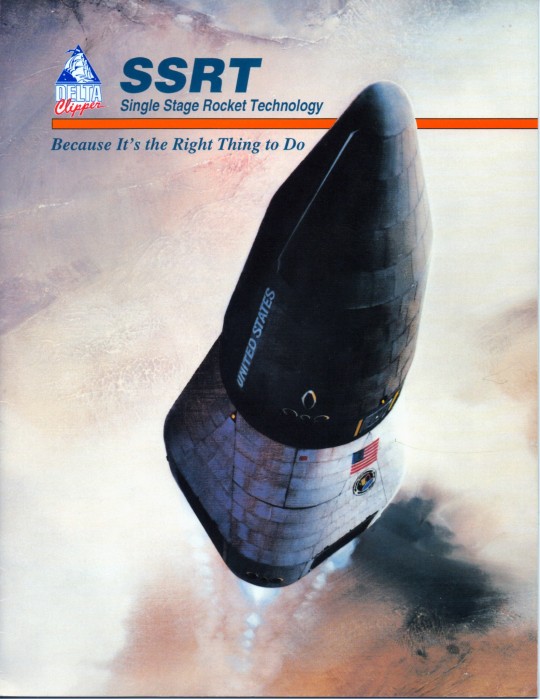
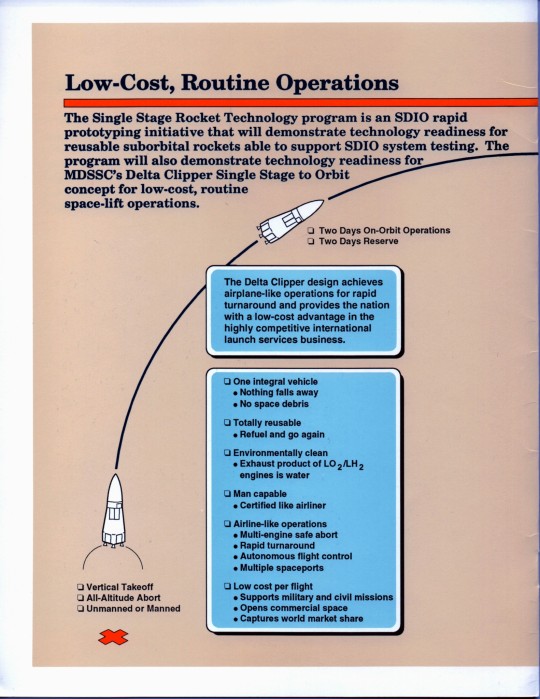
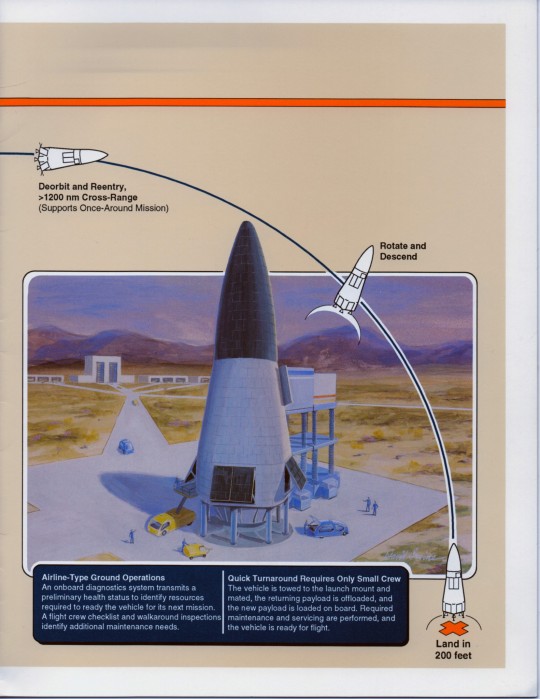
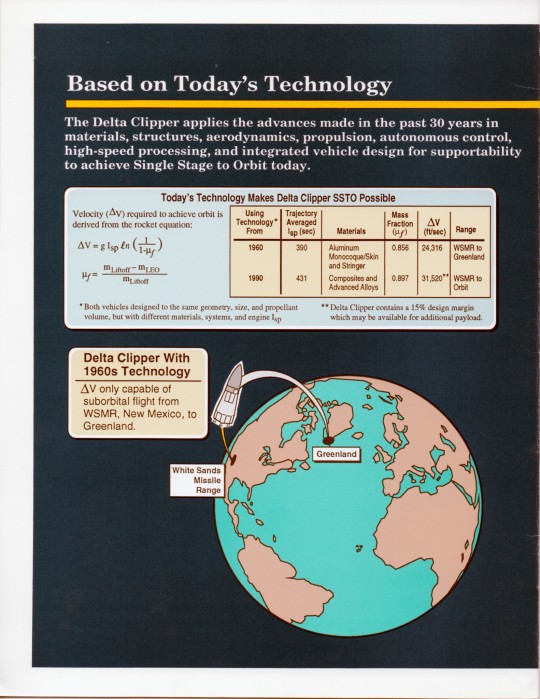
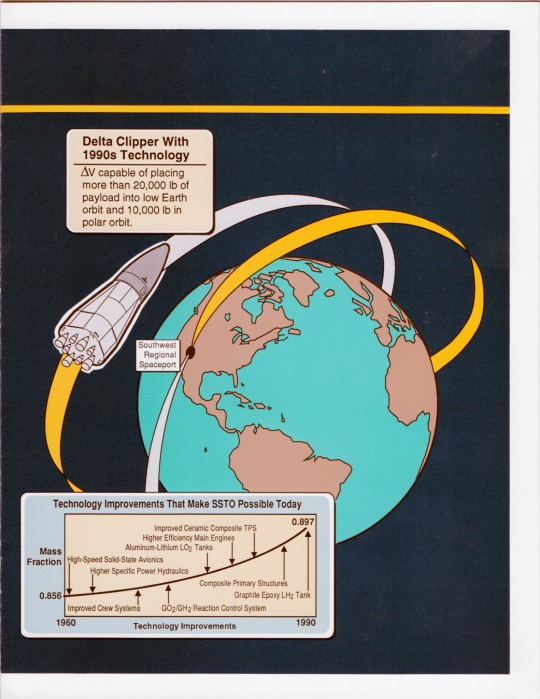
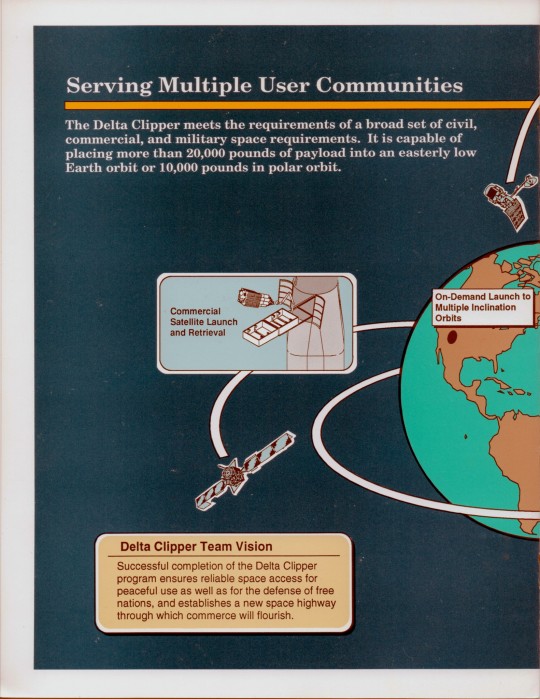
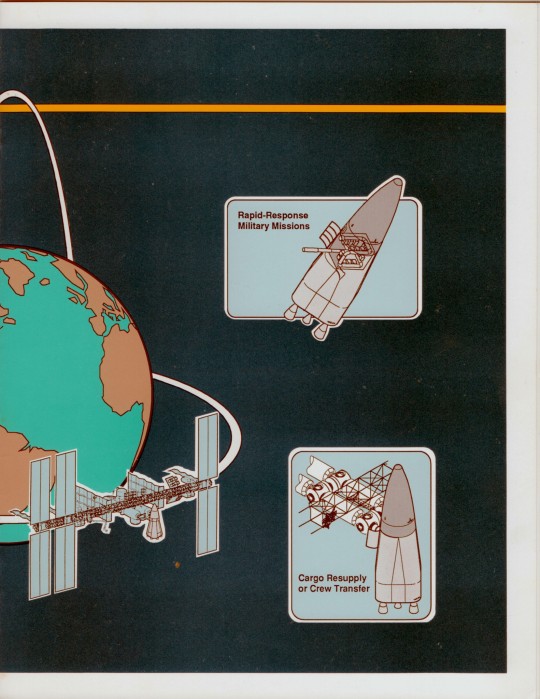

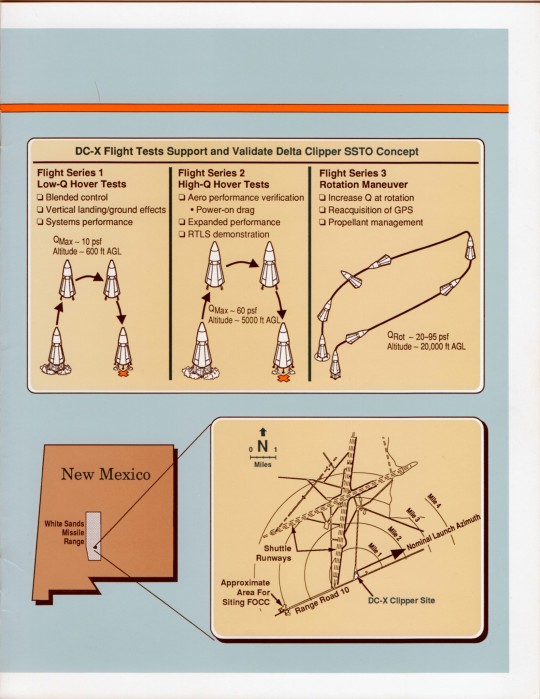
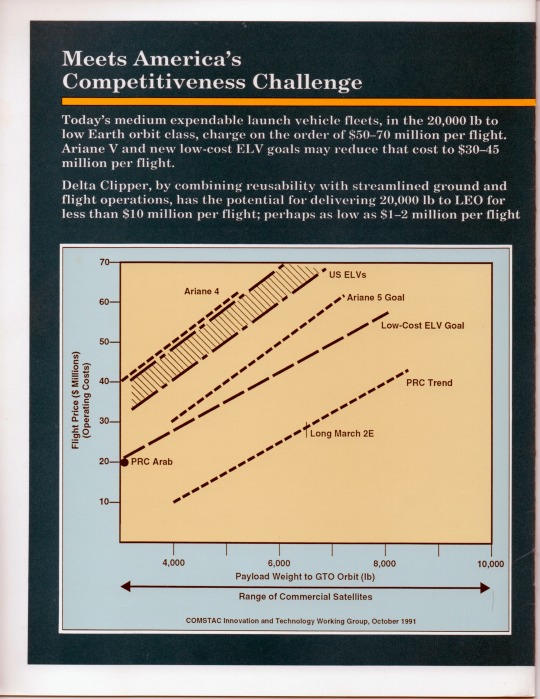
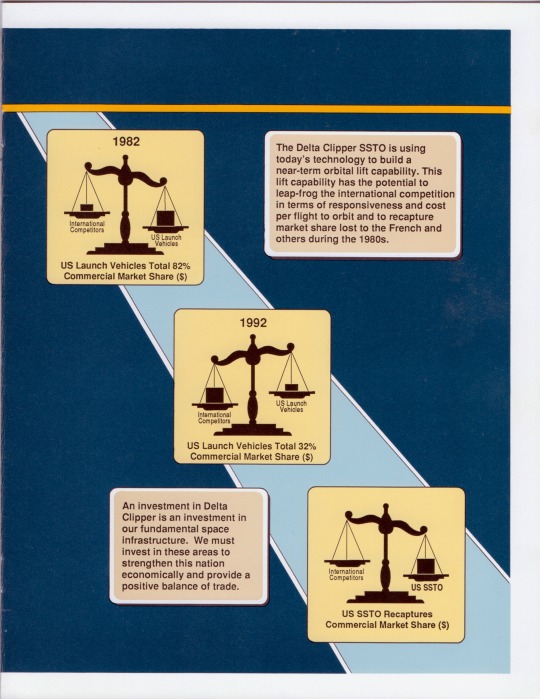
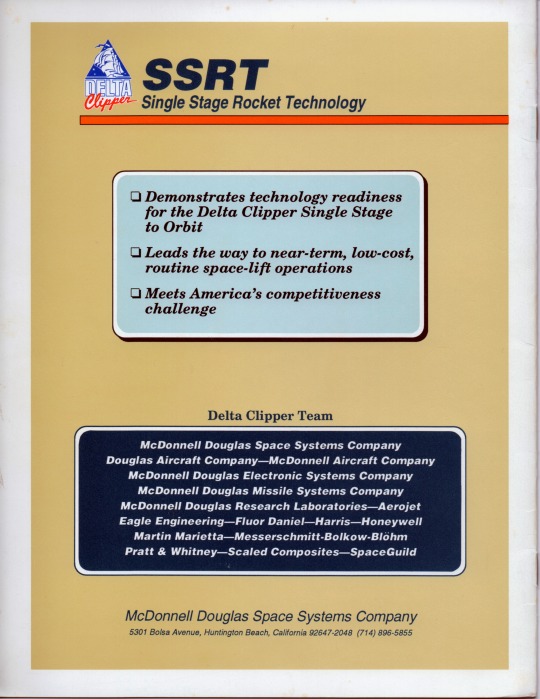
"Single Stage Rocket Technology" by Samuel Coniglio.
"Published in 1993, this colorful twelve page brochure describes the McDonnell Douglas Delta Clipper Experimental (DC-X) rocket project, the proposed successor DC-Y rocket project, and justification for Single Stage To Orbit (SSTO) technology development. It was produced at the height of the DC-X flight tests in 1993."
Date: May 1, 1993
NASA ID: SSRTBrochure
#McDonnell Douglas Delta Clipper Prototype#McDonnell Douglas DC-Y#Delta Clipper#DC-Y#Single Stage Rocket Technology#SSRT#Single Stage to Orbit#SSTO#cancelled#May#1993#NASA#my post
30 notes
·
View notes
Text
PEARL (2022)






























En 1918, alors que la Première Guerre mondiale est en cours, Pearl habite dans la ferme familiale, en pleine campagne. La jeune femme se sent prisonnière d'une existence contrainte, pauvre et sous le joug d'une mère autoritaire et dévote. D'autant plus qu'elle doit s'occuper de son père réduit à l'état de légume suite à une attaque cérébrale. Pearl rêve d'une vie glamour comme dans les films qu'elle regarde. Néanmoins, une série d'événements va doucement la faire sombrer.
#Pearl#Ti West#Tyler Bates#Tim Williams#Mia Goth#David Corenswet#Tandi Wright#Matthew Sunderland#Emma Jenkins-Purro#Alistair Sewell#Amelia Reid-Meredith#Gabe McDonnell#Lauren May Stewart#Todd Rippon#Grace Acheson#Shaman Theron
4 notes
·
View notes
Text
#OTD in Irish History | 8 May:
1567 – Shane O’Neill’s army crosses the Swilly estuary at Farsetmore, and is defeated in a pitched battle by Hugh O’Donnell. Many drown while trying to escape; O’Neill loses 1,300 men.
1597 – Death of Fiach MacHugh O’Byrne. Fiach Mac Aodha Ó Broin was Lord of Ranelagh and sometime leader of the Clann Uí Bhroin, or the O’Byrne clan, during the Elizabethan conquest of Ireland.
1796 – John Pitt…

View On WordPress
#irelandinspires#irishhistory#OTD#1916 Easter Rising#8 May#Cornelius "Con" Colbert#Declan Kerr Art#Dublin#Eamonn Ceannt#Easter Rising 1916 Series#England#Fiach MacHugh O&039;Byrne#History#History of Ireland#Hugh O&039;Donnell#Ireland#Irish History#Irish War of Independence#Jack Charlton#Joe McDonnell#Kilmainham Gaol#Loughgall Ambush#Michael Mallin#Sean Heuston#Shane O&039;Neill#Stonebreakers&039; Yard#Today in Irish History
5 notes
·
View notes
Text

Get ready for a spooky Halloween with this mug!
0 notes
Text
In Defense of Shitty Queer Art
Queer art has a long history of being censored and sidelined. In 1895, Oscar Wilde’s novel The Picture of Dorian Gray was used as evidence in the author’s sodomy trials. From the 1930s to the 1960s, the American Hays Code prohibited depictions of queerness in film, defining it as “sex perversion.” In 2020, the book Steven Universe: End of an Era by Chris McDonnell confirmed that Rebecca Sugar’s insistence on including a sapphic wedding in the show is what triggered its cancellation by Cartoon Network. According to the American Library Association, of the top ten most challenged books in 2023, seven were targeted for their queer content. Across time, place, and medium, queer art has been ruthlessly targeted by censors and protesters, and at times it seems there might be no end in sight.
So why, then, are queer spaces so viciously critical of queer art?
Name any piece of moderately-well-known queer media, and you can find immense, vitriolic discourse surrounding it. Audiences debate whether queer media is good representation, bad representation, or whether it’s otherwise too problematic to engage with. Artists are picked apart under a microscope to make sure their morals are pure enough and their identities queer enough. Every minor fault—real or perceived—is compiled in discourse dossiers and spread around online. Lines are drawn, and callout posts are made against those who get too close to “problematic art.”
Modern examples abound, such as the TV show Steven Universe, the video game Dream Daddy, or the webcomic Boyfriends, but it’s far from a new phenomenon. In his book Hi Honey, I’m Homo!, queer pop culture analyst Matt Baume writes about an example from the 1970s, where the ABC sitcom titled Soap was protested by homophobes and queer audiences alike—before a single episode of the show ever aired. Audiences didn’t wait to actually watch the show before passing judgment and writing protest letters.
After so many years starved for positive representation, it’s understandable for queer audiences to crave depictions where we’re treated well. It’s exhausting to only ever see the same tired gay tropes and subtext, and queer audiences deserve more. Yet the way to more, better, varied representation is not to insist on perfection. The pursuit of perfection is poison in art, and it’s no different when that art happens to be queer.
When the pool of queer art is so limited, it feels horrible when a piece of queer art doesn’t live up to expectations. Even if the representation is technically good, it’s disappointing to get excited for a queer story only for that story to underwhelm and frustrate you.
But the world needs that disappointing art. It needs mediocre art. It even needs the bad art. The world needs to reach a point where queer artists can fearlessly make a mess, because if queer artists can only strive for perfection, the less art they can make. They may eventually produce a masterpiece, but a single masterpiece is still a drop in the bucket compared to the oceans of censorship. The only way to drown out bigotry and offensive stereotypes created by bigots is to allow queer artists the ability to experiment, learn through making mistakes, and represent their queer truth even if it clashes with someone else’s.
If queer artists aren’t allowed to make garbage, we can never make those masterpieces everyone craves. If queer artists are terrified at all times that their art will be targeted both by bigots and their own queer communities, queer art cannot thrive.
Let queer artists make shitty art. Let allies to queer people try their hand at representation, even if they miss the mark. Let queer art be messy, and let the artists screw up without fear of overblown retribution.
It’s the only way we’ll ever get more queer art.
_
Like this essay? Tip me on Ko-Fi, pledge to my Patreon, or commission an essay on the topic of your choice!
2K notes
·
View notes
Text
If watching dozens, if not hundreds, of videos about plane crashes have taught me anything, it’s that flying isn’t dangerous, it’s capitalism that’s dangerous
#disclaimer that flying is incredibly safe#and mile for mile driving is more dangerous#(and many airlines or plane manufacturers do have culture of safety)#it’d probably be better/more accurate to say profit incentives or smthn like that than ‘capitalism’#as similar things/scenarios obviously happen/happened in non-capitalist countries where the incentives were similar#but in capitalist societies those profit incentives are largely shaped by capitalism.#/the system of capitalism we have#the problem (under the capitalist system of incentives we have) when profit is more important/more considered than safety#in other systems it may be more that say efficiency or productivity is valued higher#but it’s still the same idea that there are other incentives#I’m just thinking about the DC-10 cargo doors thing#like#not only did they have the opportunity to learn from the incident over Windsor Ontario (in which no one died but all could’ve)#they fucking found out during testing#they knew this was a problem#and they did barely anything to fix it#and so you got that Turkish airlines flight#if there’s not a culture of safety—you’re just waiting for disaster#I think part of Boeing’s problem may have come with their acquisition of Mcdonnel Douglass#where MD’s lack of culture safety spread to Boeing#and that’s how you got Max#and it’s just the manufacturers#if the profit motives are right it can cause airlines to skimp on maintenance which—if it causes a crash#will often severely hurt or kill the airline completely on top of the potential for human impact#it’s not just incentives for profit but it’s also incentives for short time thinking
1 note
·
View note
Video
youtube
Boeing Is Everything Wrong With American Capitalism
Excuse my language, but why is Boeing such a shitty corporation?
Their planes are literally falling apart in the sky.
At least six Boeing planes have had parts fall off this year — including an exit door in mid-flight. A whistle-blower has accused Boeing of a “criminal cover-up” of its safety failures.
But beyond this one company, Boeing’s descent is a case study in how American capitalism has become so rotten. Let me explain.
I’m old enough to remember when people used to say “If it’s not Boeing, I’m not going.”
But in 1997, everything changed when Boeing merged with McDonnell Douglas and became the only major maker of commercial aircraft in America. With no domestic rivals, it no longer needed to stay on the cutting edge of innovation.
Executives at Boeing who once specialized in engineering were replaced with Wall Street types who looked down on the engineers. One money-hungry CEO described those who cared too much about the integrity of Boeing’s planes, and not enough about its stock price, as “phenomenally talented assholes.”
To keep Wall Street happy, Boeing began spending billions on stock buybacks that pumped up the value of shares — money that could have been spent on safety and innovation.
It doled out hundreds of millions on campaign contributions and lobbying to lower safety standards, rake in massive government contracts, and boost its bottom line.
To cut costs, Boeing outsourced roughly 70% of its design, engineering, and manufacturing rather than rely on its experienced union workforce.
To further undercut its union, Boeing opened an assembly plant in South Carolina, a notorious anti-union state. Executives reportedly told managers not to move any unionized employees there.
This quest for profit resulted in massive quality control problems that were reported by engineers and machinists, but allegedly ignored by management. All of this inevitably led to the deadly safety issues Boeing faces today.
And because of Boeing’s monopoly-like power, it has been largely immune from any repercussions for its poor performance.
Boeing made it seem like it was punishing executives who led it astray by firing them, but still rewarded them with “golden parachutes” on the way out.
Folks, Boeing’s troubles should serve as a cautionary tale. It’s reflective of broader trends in our economy over the past forty years. Monopolization. Wealth siphoned off to rich shareholders at the expense of everyone else. Cutting corners on safety to save a dime. Bashing unions. All while spending big money lobbying the government.
Boeing may have become a shitty company, but that doesn’t mean we have to put up with it.
The government has the power to increase antitrust enforcement to bust up big companies — something that we are already starting to see in other industries.
It should also attach strings to government contracts and subsidies to ensure that private corporations are working in the best interest of the country, and not just their bottom lines.
It should ban stock buybacks, which were illegal before the Reagan administration, so profits are put back into improving the company, including the safety of products, rather than solely padding investors’ wallets.
Union power should be rebuilt, so that workers can once again act as a countervailing force to Wall Street.
And we should continue the fight to get Big Money out of politics.
It’s not too late to reverse course and chart a new flight path.
492 notes
·
View notes
Text
Boeing’s deliberately defective fleet of flying sky-wreckage
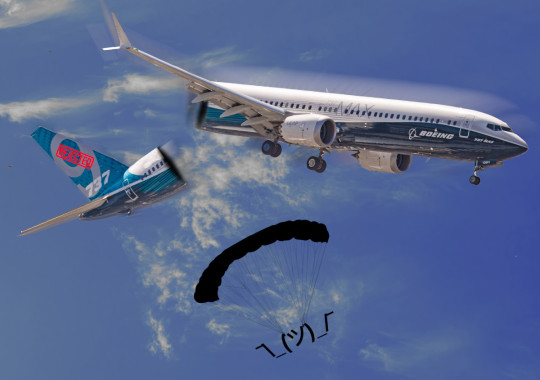
I'm touring my new, nationally bestselling novel The Bezzle! Catch me TOMORROW (May 2) in WINNIPEG, then Calgary (May 3), Vancouver (May 4), Tartu, Estonia, and beyond!

Boeing's 787 "Dreamliner" is manufactured far from the company's Seattle facility, in a non-union shop in Charleston, South Carolina. At that shop, there is a cage full of defective parts that have been pulled from production because they are not airworthy.
Hundreds of parts from that Material Review Segregation Area (MRSA) were secretly pulled from that cage and installed on aircraft that are currently plying the world's skies. Among them, sections 47/48 of a 787 – the last four rows of the plane, along with its galley and rear toilets. As Moe Tkacik writes in her excellent piece on Boeing's lethally corrupt culture of financialization and whistleblower intimidation, this is a big ass chunk of an airplane, and there's no way it could go missing from the MRSA cage without a lot of people knowing about it:
https://prospect.org/infrastructure/transportation/2024-04-30-whistleblower-laws-protect-lawbreakers/
More: MRSA parts are prominently emblazoned with red marks denoting them as defective and unsafe. For a plane to escape Boeing's production line and find its way to a civilian airport near you with these defective parts installed, many people will have to see and ignore this literal red flag.
The MRSA cage was a special concern of John "Swampy" Barnett, the Boeing whistleblower who is alleged to have killed himself in March. Tkacik's earlier profile of Swampy paints a picture of a fearless, stubborn engineer who refused to go along to get along, refused to allow himself to become inured to Boeing's growing culture of profits over safety:
https://prospect.org/infrastructure/transportation/2024-03-28-suicide-mission-boeing/
Boeing is America's last aviation company and its single largest exporter. After the company was allowed to merge with its rival McDonnell-Douglas in 1997, the combined company came under MDD's notoriously financially oriented management culture. MDD CEO Harry Stonecipher became Boeing's CEO in the early 2000s. Stonecipher was a protege of Jack Welch, the man who destroyed General Electric with cuts to quality and workforce and aggressive union-busting, a classic Mafia-style "bust-out" that devoured the company's seed corn and left it a barren wasteland:
https://qz.com/1776080/how-the-mcdonnell-douglas-boeing-merger-led-to-the-737-max-crisis
Post-merger, Boeing became increasingly infected with MDD's culture. The company chased cheap, less-skilled labor to other countries and to America's great onshore-offshore sacrifice zone, the "right-to-work" American south, where bosses can fire uppity workers who balked at criminal orders, without the hassle of a union grievance.
Stonecipher was succeeded by Jim "Prince Jim" McNerney, ex-3M CEO, another Jack Welch protege (Welch spawned a botnet of sociopath looters who seized control of the country's largest, most successful firms, and drove them into the ground). McNerney had a cute name for the company's senior engineers: "phenomenally talented assholes." He created a program to help his managers force these skilled workers – everyone a Boeing who knew how to build a plane – out of the company.
McNerney's big idea was to get rid of "phenomenally talented assholes" and outsource the Dreamliner's design to Boeing's suppliers, who were utterly dependent on the company and could easily be pushed around (McNerney didn't care that most of these companies lacked engineering departments). This resulted in a $80b cost overrun, and a last-minute scramble to save the 787 by shipping a "cleanup crew" from Seattle to South Carolina, in the hopes that those "phenomenally talented assholes" could save McNerney's ass.
Swampy was part of the cleanup crew. He was terrified by what he saw there. Boeing had convinced the FAA to let them company perform its own inspections, replacing independent government inspectors with Boeing employees. The company would mark its own homework, and it swore that it wouldn't cheat.
Boeing cheated. Swampy dutifully reported the legion of safety violations he witnessed and was banished to babysit the MRSA, an assignment his managers viewed as a punishment that would isolate Swampy from the criminality he refused to stop reporting. Instead, Swampy audited the MRSA, and discovered that at least 420 defective aviation components had gone missing from the cage, presumably to be installed in planes that were behind schedule. Swampy then audited the keys to the MRSA and learned that hundreds of keys were "floating around" the Charleston facility. Virtually anyone could liberate a defective part and install it into an airplane without any paper trail.
Swampy's bosses had a plan for dealing with this. They ordered Swampy to "pencil whip" the investigations of 420 missing defective components and close the cases without actually figuring out what happened to them. Swampy refused.
Instead, Swampy took his concerns to a departmental meeting where 12 managers were present and announced that "if we can’t find them, any that we can’t find, we need to report it to the FAA." The only response came from a supervisor, who said, "We’re not going to report anything to the FAA."
The thing is, Swampy wasn't just protecting the lives of the passengers in those defective aircraft – he was also protecting Boeing employees. Under Sec 38 of the US Criminal Code, it's a 15-year felony to make any "materially false writing, entry, certification, document, record, data plate, label, or electronic communication concerning any aircraft or space vehicle part."
(When Swampy told a meeting that he took this seriously because "the paperwork is just as important as the aircraft" the room erupted in laughter.)
Swampy sent his own inspectors to the factory floor, and they discovered "dozens of red-painted defective parts installed on planes."
Swampy blew the whistle. How did the 787 – and the rest of Boeing's defective flying turkeys – escape the hangar and find their way into commercial airlines' fleets? Tkacik blames a 2000 whistleblower law called AIR21 that:
creates such byzantine procedures, locates adjudication power in such an outgunned federal agency, and gives whistleblowers such a narrow chance of success that it effectively immunizes airplane manufacturers, of which there is one in the United States, from suffering any legal repercussions from the testimony of their own workers.
By his own estimation, Swampy was ordered to commit two felonies per week for six years. Tkacik explains that this kind of operation relies on a culture of ignorance – managers must not document their orders, and workers must not be made aware of the law. Whistleblowers like Swampy, who spoke the unspeakable, were sidelined (an assessment by one of Swampy's managers called him "one of the best" and finished that "leadership would give hugs and high fives all around at his departure").
Multiple whistleblowers were singled out for retaliation and forced departure. William Hobek, a quality manager who refused to "pencil whip" the missing, massive 47-48 assembly that had wandered away from the MRSA cage, was given a "weak" performance review and fired despite an HR manager admitting that it was bogus.
Another quality manager, Cynthia Kitchens, filed an ethics complaint against manager Elton Wright who responded to her persistent reporting of defects on the line by shoving her against a wall and shouting that Boeing was "a good ol’ boys’ club and you need to get on board." Kitchens was fired in 2016. She had cancer at the time.
John Woods, yet another quality engineer, was fired after he refused to sign off on a corner-cutting process to repair a fuselage – the FAA later backed up his judgment.
Then there's Sam Salehpour, the 787 quality engineer whose tearful Congressional testimony described more corner-cutting on fuselage repairs:
https://www.youtube.com/watch?v=PP0xhIe1LFE
Salehpour's boss followed the Boeing playbook to the letter: Salehpour was constantly harangued and bullied, and he was isolated from colleagues who might concur with his assessment. When Salehpour announced that he would give Congressional testimony, his car was sabotaged under mysterious circumstances.
It's a playbook. Salehpour's experience isn't unusual at Boeing. Two other engineers, working on the 787 Organization Designation Authorization, held up production by insisting that the company fix the planes' onboard navigation computers. Their boss gave them a terrible performance review, admitting that top management was furious at the delays and had ordered him to punish the engineers. The engineers' union grievance failed, with Boeing concluding that this conduct – which they admitted to – didn't rise to the level of retaliation.
As Tkacik points out, these engineers and managers that Boeing targeted for intimidation and retaliation are the very same staff who are supposed to be performing inspections of behalf of the FAA. In other words, Boeing has spent years attacking its own regulator, with total impunity.
But it's not just the FAA who've failed to take action – it's also the DOJ, who have consistently declined to bring prosecutions in most cases, and who settled the rare case they did bring with "deferred prosecution agreements." This pattern was true under Trump's DOJ and continued under Biden's tenure. Biden's prosecutors have been so lackluster that a federal judge "publicly rebuked the DOJ for failing to take seriously the reputational damage its conduct throughout the Boeing case was inflicting on the agency."
Meanwhile, there's the AIR21 rule, a "whistleblower" rule that actually protects Boeing from whistleblowers. Under AIR21, an aviation whistleblower who is retaliated against by their employer must first try to resolve their problem internally. If that fails, the whistleblower has only one course of action: file an OSHA complaint within 90 days (if HR takes more than 90 days to resolve your internal complaint, you can no have no further recourse). If you manage to raise a complaint with OSHA, it is heard by a secret tribunal that has no subpoena power and routinely takes five years to rule on cases, and rules against whistleblowers 97% of the time.
Boeing whistleblowers who missed the 90-day cutoff have filled the South Carolina courts with last-ditch attempts to hold the company to account. When they lose these cases – as is routine, given Boeing's enormous legal muscle and AIR21's legal handcuffs – they are often ordered to pay Boeing's legal costs.
Tkacik cites Swampy's lawyer, Rob Turkewitz, who says Swampy was the only one of Boeing's whistleblowers who was "savvy, meticulous, and fast-moving enough to bring an AIR 21 case capable of jumping through all the hoops" to file an AIR21 case, which then took seven years. Turkewitz calls Boeing South Carolina "a criminal enterprise."
That's a conclusion that's hard to argue with. Take Boeing's excuse for not producing the documentation of its slapdash reinstallation of the Alaska Air door plug that fell off its plane in flight: the company says it's not criminally liable for failing to provide the paperwork, because it never documented the repair. Not documenting the repair is also a crime.
You might have heard that there's some accountability coming to the Boeing boardroom, with the ouster of CEO David Calhoun. Calhoun's likely successor is Patrick Shanahan, whom Tkacik describes as "the architect of the ethos that governed the 787 program" and whom her source called "a classic schoolyard bully."
If Shanahan's name rings a bell, it might be because he was almost Trump's Secretary of Defense, but that was derailed by the news that he had "emphatically defended" his 17 year old son after the boy nearly beat his mother to death with a baseball bat. Shanahan is presently CEO of Spirit Aerospace, who made the door-plug that fell out of the Alaska Airlines 737 Max.
Boeing is a company where senior managers only fail up and where whistleblowers are terrorized in and out of the workplace. One of Tkacik's sources noticed his car shimmying. The source, an ex-787 worker who'd been fired after raising safety complaints, had tried to bring an AIR21 complaint, but withdrew it out of fear of being bankrupted if he was ordered to pay Boeing's legal costs. When the whistleblower pulled over, he discovered that two of the lug-nuts had been removed from one of his wheels.
The whistleblower texted Tkcacik to say (not for the first time): "If anything happens, I'm not suicidal."
Boeing is a primary aerospace contractor to the US government. It's clear that its management – and investors – consider it too big to jail. It's also clear that they know it's too big to fail – after all, the company did a $43b stock buyback, then got billions in a publicly funded buyback.
Boeing is, effectively, a government agency that is run for the benefit of its investors. It performs its own safety inspections. It investigates its own criminal violations of safety rules. It loots its own coffers and then refills them at public expense.
Meanwhile, the company has filled our skies with at least 420 airplanes with defective, red-painted parts that were locked up in the MRSA cage, then snuck out and fitted to an airplane that you or someone you love could fly on the next time you take your family on vacation or fly somewhere for work.

If you'd like an essay-formatted version of this post to read or share, here's a link to it on pluralistic.net, my surveillance-free, ad-free, tracker-free blog:
https://pluralistic.net/2024/05/01/boeing-boeing/#mrsa

Image:
Tom Axford 1 (modified)
https://commons.wikimedia.org/wiki/File:Blue_sky_with_wisps_of_cloud_on_a_clear_summer_morning.jpg
CC BY-SA 4.0
https://creativecommons.org/licenses/by-sa/4.0/deed.en
--
Clemens Vasters (modified)
https://commons.wikimedia.org/wiki/File:N7379E_-_Boeing_737_MAX_9.jpg
CC BY 2.0
https://creativecommons.org/licenses/by/2.0/deed.en
#pluralistic#mrsa#Material Review Segregation Area#787#dreamliner#swampy#faa#marking your own homework#monopolies#AS9100#Cynthia Kitchens#Sam Salehpour#737 max#ntsb#David Calhoun#boeing#whistleblowers#aviation#safety#John Barnett#maureen tkacik#Patrick Shanahan
745 notes
·
View notes
Text
timepetals thoughts i keep having:
i know that the assumption is “she is my s-” means soulmate but i always think he just thinks of rose as his soul. less that she completes him or is his other half and more that she just is his conscience and any goodness he may have is hers. he was born out of love for her, she is such an integral part of him, she is his soul itself.
i know everyone has taken permanent damage from the “how long are you going to stay with me” and why the general focus is on the doctor’s reaction but the way rose says forever gets to me. she’s not giddy or girlish when she says it, in some ways she almost sounds resigned to it, which has wonderfully angsty connotations in the timeline of s2. but it’s why it really works for me, she is so dead serious and committed when she says it, because she understands everything it means (and therefore part of her feels solemn about it). it has a lot of weight to it. even the first time donna says she’s going to travel with the doctor forever to martha at the end of the doctor’s daughter she sounds a lot more fanciful.
every time i hear the doctor scream when rose loses her grip in doomsday i just think that he would absolutely not have survived her actually being sucked into the void.
i always think the vocals in doomsday are similar to the doctor’s theme so to me the angry rock music is rose’s side and the vocals are his, rather than the howling wolf idea i’ve heard some people compare it to. how the doctor’s theme is lonely and mournful with its sparse instruments but calm, everything the ninth doctor was, while doomsday is heartbroken and angry and an entire orchestra because it’s two people overcome with grief together. how doomsday becomes such a motif for both characters individually, even when they're separated.
i still struggle to comprehend that the doctor wearing floral ties in s3 is canon and NOT a fanfic trope like you're telling the doctor said "i need a floral motif as close to my two hearts as possible" and you're describing him as something other than a grieving widower???
the doctor really could not go anywhere in s3 without running into some kind of couple but i never see people talk about the parallels in 42. “we chose this ship together / he keeps me honest so i don’t want false hope” and the way the doctor literally gives mcdonnell his condolences through gritted teeth?? the fact that she would rather die with korwin than be without him and have it be her fault
that the doctor, king of self-loathing, saw rose dressed as his ninth self and carrying a giant weapon and he not only RAN to her but then deliberately protected her from the trauma of seeing him change again. and then tentoo immediately picks a blue suit to be like now i’m matchey matchey with rose 🥰 the universe was ending and he’d seen rose again for two actual minutes but the doctor was so utterly focused on her.
how tentoo truly is rose's doctor, especially as he's got that little bit of nine in him. he's born out of the same love and protection of his previous incarnations but he loses a heart and the curse of the timelords and goes oh, this is rose's heart. and then he wears the blue mourning suit and yes, there is still mourning, but there is also the start of the rest of their lives together.
how the doctor’s hair most noticeably changed after school reunion to become spikier and less boyish. how that coincides with him using mickey to put distance between himself and rose now that he’s been reminded of rose’s mortality.
how wild the doctor and jack’s conversation in utopia is. the way the doctor says “rose” like it’s an entire explanation in itself because even before she absorbed the time vortex she fundamentally changed the life of everyone she met. the way he says “everything she did was so human” and the way he accepts jack’s sorry to him because there’s no trying to deny his feelings from jack, not when he saw his ninth self. the way jack has BARELY finished his sentence about watching rose grow up when the doctor casually asks him if he wants to die, the almost playful way he says it. one semi suicidal immortal who spent half of the season trying to get himself killed to another, both of them still kind of toying with the idea. both of them trying to have hope even though they've lost so much.
352 notes
·
View notes
Text

"This artist's rendering depicts the McDonnell Douglas X-33 proposal. this was to serve as a technology demonstrator of a Single-Stage-To-Orbit (SSTO) Reusable Launch Vehicle (RLV). McDonnell Douglas submitted a vertical landing configuration design which used liquid oxygen/hydrogen engines. NASA considered design submissions from Rockwell, Lockheed Martin, and McDonnell Douglas. NASA selected Lockheed Martin's X-33 design on 2 July 1996. The RLV technology program was a cooperative agreement between NASA and industry. The goal of the RLV technology program was to produce significant reductions in the cost of access to space, and to promote the creation and delivery of new space services and other activities that would have improve U.S. economic competitiveness."
Date: May 1996
Computer art by J. Frassanito & Associates
NASA ID: EC96-43631-6
#McDonnell Douglas X-33#X-33#Reusable Launch Vehicle#RLV#Spaceplane#NASA#concept art#Single Stage to Orbit#SSTO#cancelled#May#1996#my post
17 notes
·
View notes
Text

History of the Hughes OH-6 Cayuse Helicopter
The Hughes OH-6 Cayuse, also known as the "Loach," is a single-engine light helicopter that was developed by Hughes Helicopters. Here is a summary of its history after production and launch:
- The OH-6 Cayuse was developed to meet the United States Army's Technical Specification 153, which was issued in 1960 to replace its Bell H-13 Sioux fleet.
- Hughes competed against two other finalists, Fairchild-Hiller and Bell, for a production contract. In May 1965, the U.S. Army awarded a production contract to Hughes for the OH-6 Cayuse.
- The initial order was for 714 rotorcraft, but it was subsequently increased to 1,300 with an option for another 114.
- The OH-6 Cayuse entered service with the U.S. Army in 1966.
- The OH-6 Cayuse was used for various missions, including personnel transport, escort and attack operations, and observation.
- The OH-6 Cayuse set 23 world records in the 1960s, including speed, endurance, and time to climb records.
- In 1968, Hughes faced competition from Bell's OH-58 Kiowa, which led to the production of the original OH-6 Cayuse halting in 1970.
- The OH-6 Cayuse's design caught the attention of McDonnell Douglas in the 1980s, leading to further developments and adaptations, such as the MH-6 Little Bird, which showcased versatility with options for different weapons.
- The civilian version of the Cayuse, known as the MD 500, is still produced by MD Helicopters.
- The OH-6 Cayuse continued to serve with the U.S. Army's Special Forces and found popularity with civilian pilots and law enforcement agencies.
- The OH-6 Cayuse's contributions to military reconnaissance and its versatility in combat make it a notable subject for military aviation enthusiasts and model collectors.
44 notes
·
View notes
Note
I'm kinda new to Milex, despite loving both AM and TLSP for years, and like so many questions.......What happened to those sweethearts, what are the divorce allegations, why they don't hang out anymore, is there any tension between Miles and Alex's girlfriend?😭 I need to know
hiii and welcome to the milex fandom!!
first of all, you can check out this post to know more about the divorce allegations - but of course always remember it's just theories, no one really knows what happened (if anything happened at all)
second of all, they do still hang out! they're just very private about it and rarely ever get spotted together, but over the years after the tbhc and cdg eras we got to see them together a few times, usually hanging out in london like here (august 2020):

and here (july 2021):

but also in jnstances like this one (september 2021) (it's not confirmed that they were together but miles posted this with the caption 'ARRABIATA HEAD X' and arrabiata is Their Thing + those are alex's sunglasses and the photo was most likely taken by him idc i will die on this hill)
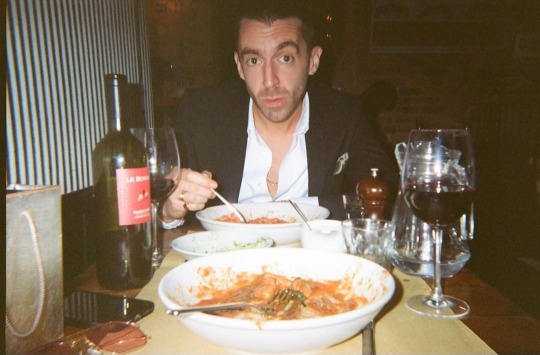
then we got to see them together in june 2022, hanging out at some pub:

and also at zackery michael and lola mcdonnell's wedding aka the wedding of the century aka i wish i was a fly on the wall there. this was also in june 2022, they were both there but sadly we didn't get any interaction nor photos of them together:



we did however get a few interactions between miles, (nadya) and louise.
in may 2023 they were spotted having a cute little date night at a scott walker tribute concert in london (feat. the one and only brown leather jacket):

and then of course we got to see them playing 505 together in june (💖) after five whole years of not sharing a stage:

and then again in dublin, miles opened for them on all four nights of the irish leg in october and joined them for 505 on the very last one:

during both the cts and omb eras miles has mentioned alex and tlsp quite a few times (both spontaneously or because of annoying interviewers asking him about it).
speaking of miles and louise, they ignored each other for a long time since alex started dating her back in 2018, which was quite weird considering miles usually seemed to have great friendships with alex's girlfriends (he was very close to taylor, and he's still friends with alexa). recently they started interacting more, liking each other's posts or leaving comments there (see miles commenting on her latest birthday post for alex). as i mentioned, they interacted a bit during zack and lola's wedding (katie posted a video on ig where her, kirstin, louise, miles and nadya were all hanging out together). i think at this point it's safe to say miles and nadya aren't together anymore, but her and louise were hanging out quite a lot during 2022/start of 2023 and they probably got introduced through their respective boyfriends. there's no official drama between miles and louise but they don't seem to be friends, just close acquaintances at best.
and... i think that's it anon! in conclusion they're still very much close and hanging out with each other, it's just much rarer to get a glimpse of them but maybe in the (hopefully not so distant) future we'll get a tlsp3 announcement and then they'll finally be touring together again, planet earth will heal and we'll be well-fed once again. in the meantime, i hope this little recap was helpful <3
#@ moots please let me know if i missed something crucial!! i tried to include everything i could think of but if i forgot something >#> some instance of them hanging out together over the recent years then don't hesitate to add it to the post#also anon this is just considering the official sightings we've had. who knows what happens behind closed doors and how many times they >#> hang out without any of us knowing (top 10 thoughts that haunt me at night)#it's also worth noting they keep vague posting about each other through their lyrics which is very gay of them if i do say so myself#never beating the psychosexual relationship allegations!#ramblings#answered
72 notes
·
View notes
Text




27 May 1958. First flight of the McDonnell Douglas YF4H-1, build number 142259 from Edwards AFB piloted by test pilot Robert Little. American tandem two-seat, twin-engine, all-weather, long-range supersonic jet interceptor fighter/fighter-bomber. Prototype of the F-4 Phantom II.
@ron_eisele via X

47 notes
·
View notes